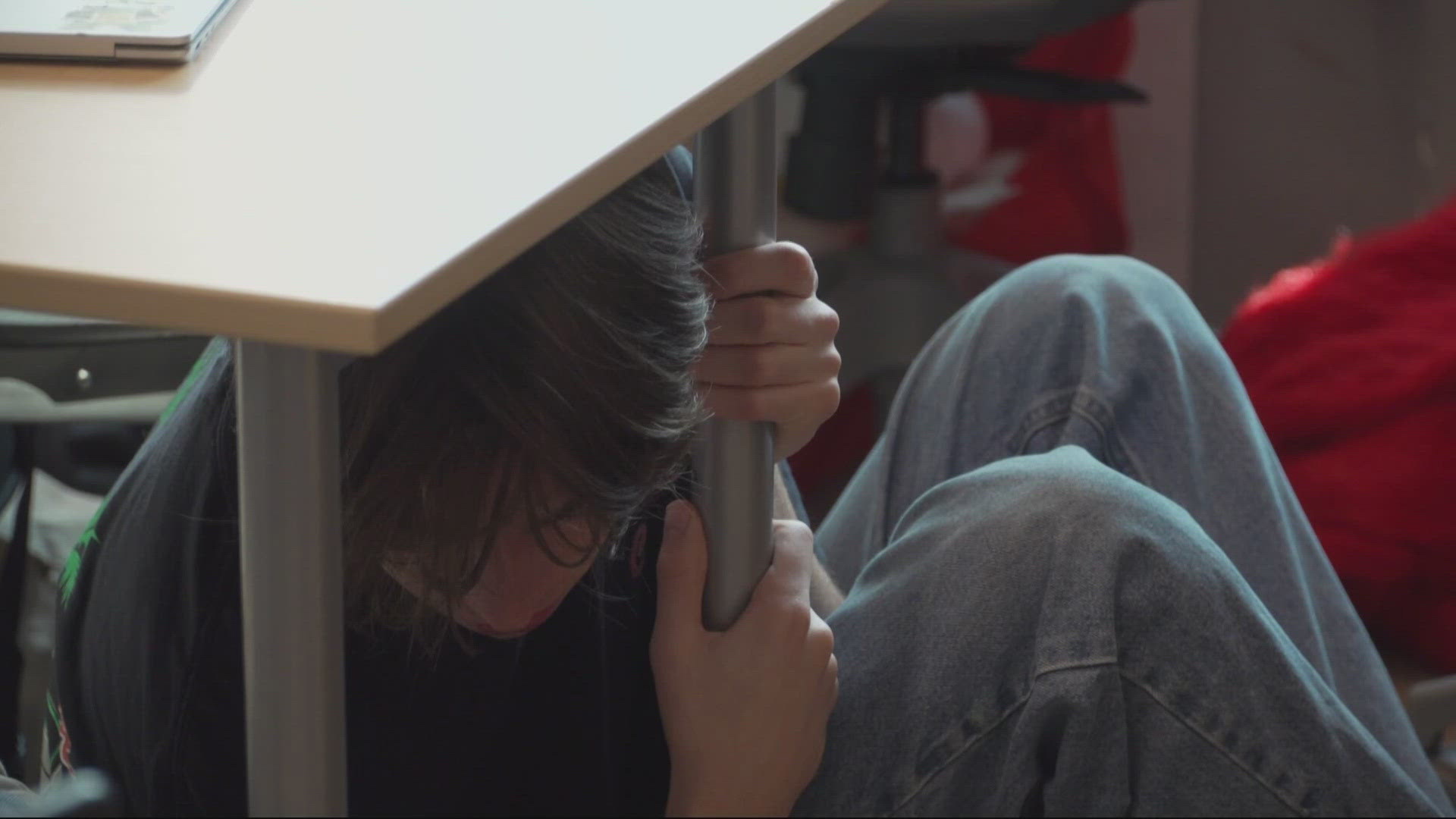PORTLAND, Ore. — It's almost that time to drop, cover and hold on as millions of people around the world participate in the 2024 Great ShakeOut, with over 57 million people around the world registered to practice in the annual earthquake drill.
The drill will start at 10:17 A.M. Thursday with more than half a million Oregonians and 1.4 million in Washington expected to participate, including over 352,000 people right here in the Willamette Valley. The practice is especially important for people in the Pacific Northwest, for a very specific reason.
"It is still true that ‘The Big One’ is going to happen," said Liz Safran, associate professor of geological science at Lewis and Clark College, referring to the massive earthquake due to hit along the Cascadia Subduction Zone. It could happen tomorrow or in 50 years, but whenever it does arrive, it's expected to cause widespread destruction from northern California up to southern British Columbia, with the added possibility of tsunamis along the coast.
"We have local faults in the Portland area which are less understood and those could be even more damaging in a more localized area," Safran said.
Multnomah County is preparing for the Big One by upgrading existing infrastructure that's unlikely to survive the shaking. That's the driving force behind the plan to build a seismically resilient replacement for the current Burnside Bridge.
"For the Pacific Northwest, we have an earthquake early warning system called 'Shake Alert.' It doesn't tell you when an earthquake is going to happen, but it tells you when an earthquake has already happened," Safran said.
The smartphone app is powered by a network of sensors across the region that can detect intense shaking, allowing the system to map the origin and direction of the seismic waves and automatically send warnings to app users who are further away from the epicenter, potentially giving them a few critical seconds to take cover before the shaking reaches them.
KGW also asked Safran if recent earthquakes detected around Mount St. Helens and Mount Adams could speed up the arrival of the Big One, or signal that the Big One is coming soon. Luckily, the answer is no.
"There are sometimes small earthquakes associated with volcanoes," Safram said. "But that does not indicate that a bigger earthquake on one of these other faults is on the way."
Still, she said, it's important to be prepared for when the Big One inevitably arrives. One thing people can do is make sure they have at least two weeks' worth of food and water stocked up. More tips are available at publicalerts.org.

